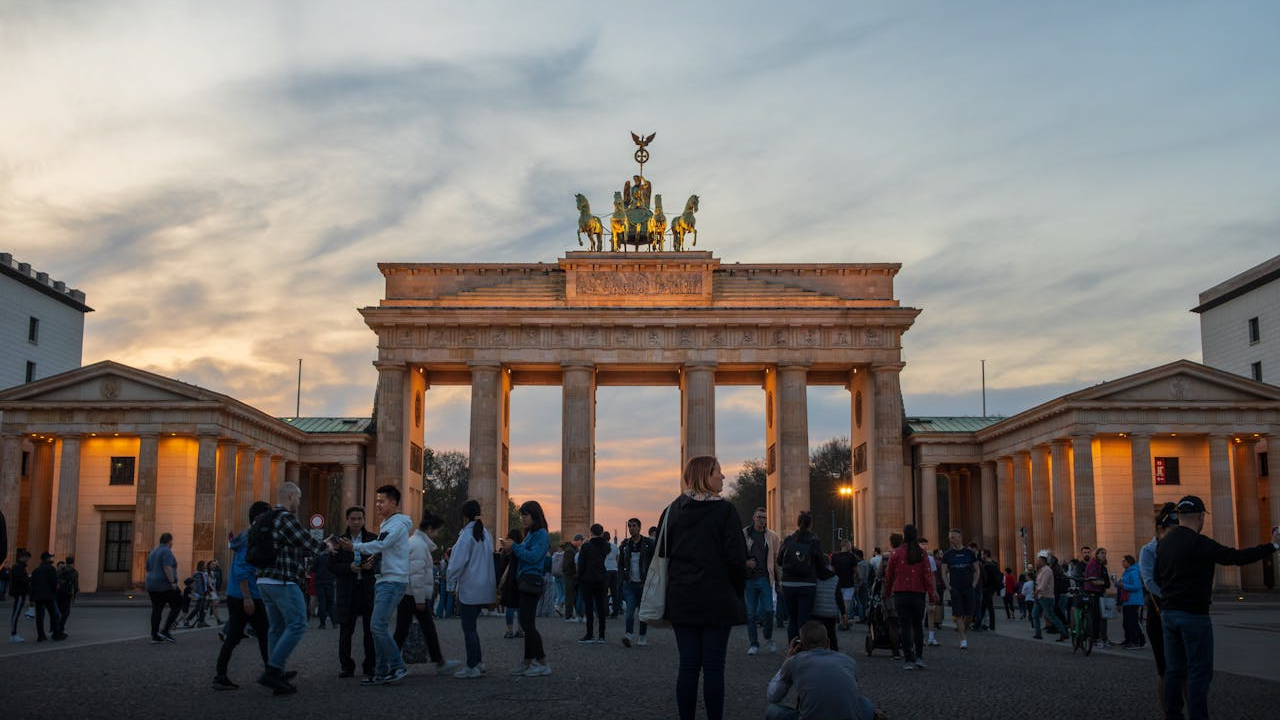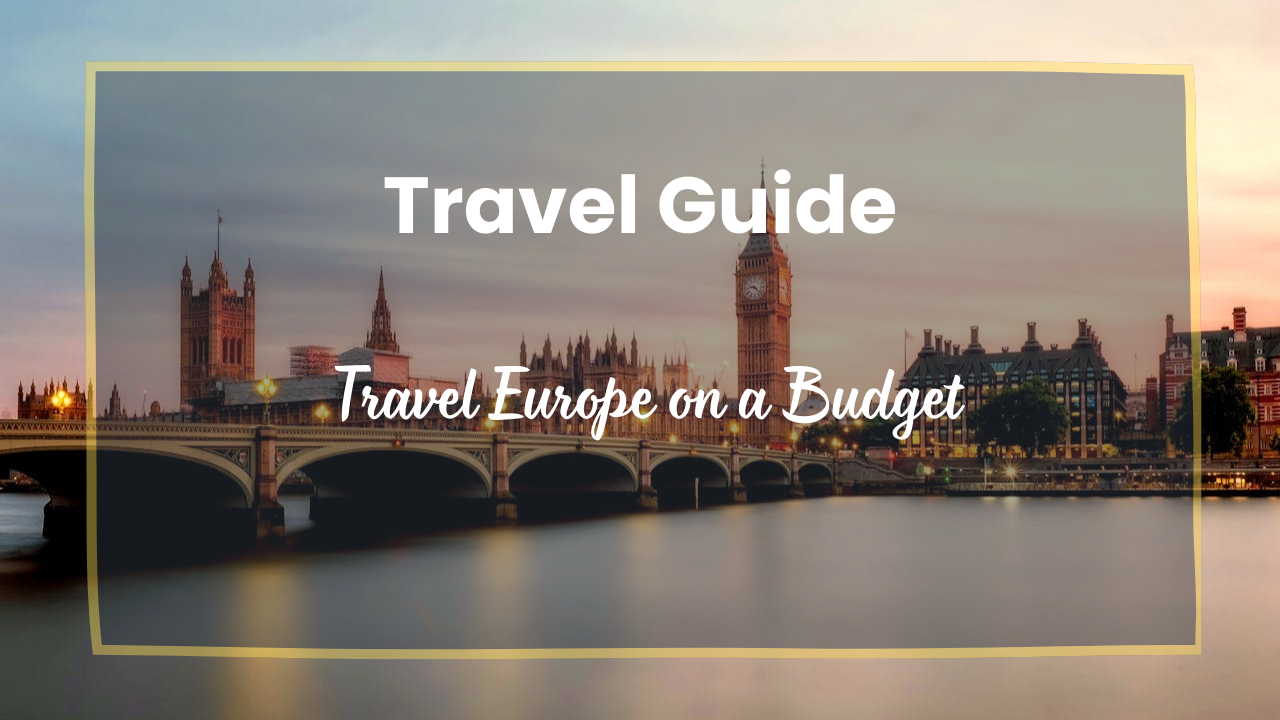Travel Europe on a Budget: Cheap Cities, Prices, & Hacks

It’s possible to travel Europe on a tight budget. It’s not necessary to have a large budget in order to visit castles in Germany or Italy, or take a hike in Montenegro. Travel hacks, a smart itinerary, and an unconventional attitude are all you need.
This guide is full of strategies used by real travelers. You will find cost breakdowns, as well as information on cheap cities and money-saving tips, tools, and hacks.
1. Travel Europe on a Budget by Skipping the Tourist Traps
Paris, Venice and Amsterdam may be beautiful, but their costs will eat into your budget. You can save money by balancing your European trip with some affordable gems.
| Expensive City | Swap For | Daily Budget (USD) |
| Paris | Lyon, Strasbourg | $65–$85 |
| Rome | Naples, Bari | $50–$75 |
| Amsterdam | Utrecht, Haarlem | $55–$70 |
| Barcelona | Valencia, Zaragoza | $60–$80 |
| Vienna | Bratislava, Ljubljana | $45–$65 |
- Many places offer lower prices for lodging, food and fewer crowds.
- Locals have a less jaded view of tourism. You’ll enjoy a more genuine and authentic experience.
Pro tip: Fly to a smaller hub and spend a few nights in a large city. Then, retreat to a town nearby where you can save 30-50% on food and lodging.
2. Travelling in the Off-Season
Save half on your flight and avoid the crowds of tourists.
| Month | Advantage |
| October | Warm fall days, low tourist flow |
| November | Cheapest airfare of the year |
| January | Deep winter = deep discounts |
| March | Pre-Easter deals everywhere |
- Visit Europe between October and March.
- The cost of accommodation and airfare is significantly lower.
- Even famous cities like Prague and Vienna have become more affordable.
Off-season, even expensive countries such as Switzerland and Austria can be cheaper. You won’t have to fight selfie-stick crowds in the Louvre or the Colosseum.
Tool: Use Skyscanner or Google Flights to find flexible dates for travel as well as the cheapest months.
3. Travel Using Work Exchange or Volunteering
Workaway, Worldpackers, and HelpX are all sites that offer the opportunity to exchange a few hours per day of work for free food and accommodation. It’s one of the best-kept secrets for budget travelers.
- Work on a farm or in a hostel. You can also help with digital tasks.
- Enjoy cultural immersion and save money.
- Build meaningful friendships and relationships.
Some hosts include local activities such as cooking lessons or private tours in their stay.
4. Travel Europe on a Budget with Alternative Accommodation

Hotels? Meh. You have choices.
- The hostels are an excellent way to meet new people, and they are cheaper than hotels.
- Couchsurfing – Stay in locals’ homes at no cost
- Camping in Europe can be affordable, safe and scenic.
- Airbnb or short-term rentals: Perfect to share the cost of a rental with a large group.
- House-sitting: When you house-sit, you take care of someone else’s plants and pets.
| Platform | Best For | Cost |
| Hostelworld | Solo/backpackers | €10–€40 |
| Couchsurfing | Cultural immersion | Free |
| Workaway | Long-term budget travel | Free stay |
| TrustedHousesitters | Couples/digital nomads | Free |
These options reduce travel costs and provide an authentic local experience.
5. Cheap and Clever Transport
Public transport is cheaper than expensive taxis or private transfers. These tips will help budget travelers navigate their surroundings.
- FlixBus, BlaBlaCar and RegioJet: Long-haul buses starting at €5-15.
- Eurail/Interrail: Best option for rail passes that cover multiple countries if you are under 27 years old or travel in short periods.
- BlaBlaCar: Carpooling across borders. Imagine Uber and Craigslist combined.
- Budget Airlines: Ryanair, EasyJet, and Wizz Air offer many flights below €30.
| Route | Cheapest Option | Estimated Cost |
| Berlin → Prague | FlixBus | €9 |
| Lisbon → Madrid | BlaBlaCar | €22 |
| Budapest → Krakow | RegioJet Overnight | €15 |
| Rome → Barcelona | Ryanair Flight | €25–35 |
Bonus tip: There are apps available that allow you to compare transport options, routes and more. You might discover hidden gems by choosing the slower and cheaper route.
6. Travel by Packing Light
You can pay for overpacking in fees and stress.
- By only bringing carry-on bags, you can avoid airline baggage charges.
- Bring along a range of clothing to wash while on the road.
- Packing cubes can help you stay organized.
Weight and size restrictions are strict on most budget airlines. Staying light can help you save time, money and energy. It’s easier to get on buses, trains, and bicycles.
7. Travel Europe on a Budget by Eating Smart
You don’t need to spend a lot of money on Michelin-starred food.
- Local markets: Purchase fresh fruits, vegetables and meats.
- Street food: Doner Kebabs in Germany; Trdelniks in the Czech Republic; Bureks in the Balkans.
- Lunch menus: “Menu del Dia”, “Menu Turistico”, or top-tier discounts
- Cook: Booking hostels and Airbnbs with kitchens is a great way to cook. A €3 pasta dinner is better than €18 of spaghetti in a tourist trap.
| Country | Cheap Meal Option | Cost |
| Greece | Gyro w/ fries | €3–€5 |
| Czech Rep. | Beer + Goulash Lunch Set | €6–€8 |
| Portugal | Bacalhau dish in a local cafe | €7–€9 |
You can purchase fresh pasta from a local store and cook your own meal. Take a baguette with cheese to a park picnic. You’ll often have a more enjoyable experience than eating at a restaurant.
8. Travel by Exploring Free and Local Experiences

Europe is bursting with free activities
- Enjoy free walking tours (just tip the guide!)
- Free entry to Museums on certain days
- Churches, cathedrals, and historic landmarks
- Outdoor concerts and festivals
- Public parks, beaches, and hiking trails
Check local tourism websites for free museum events or days. Free top-tier museums are available in cities like London, Berlin and Oslo.
9. Travel Europe on a Budget with the Sharing Economy
The sharing economy has revolutionized travel. Use it to your advantage:
- Rideshares and bicycle rentals are replacing taxis.
- Apps like EatWith allow you to share food with locals for a very low price.
- Luggage storage services like Nannybag or Bounce.
- You can use these platforms to share camping gear, sports equipment and tools.
Services are more personal, affordable and environmentally friendly.
10. Travel by Being Money-Savvy
Adopting simple habits can help you save hundreds of euros.
- The best travel cards are those that have no fees, like Wise and Revolut.
- Use ATMs instead of airport kiosks.
- Pay in the local currency and not your own.
- Apps such as Trail Wallet or TravelSpend can help you track your spending.
| Tip | Savings Over 1 Month |
| ATM over kiosk | $30–$60 |
| Cooking over eating out | $150–$300 |
| Wise vs. traditional bank | $50–$100 |
Before converting money, check the exchange rate and any fees. Every little fee adds up over time.
11. Travel by Connecting with Fellow Travelers 
Community makes a huge difference. Connect with other travelers.
- Shared meals or group discounts are available.
- Share your hidden gems and cheap food tips.
- For fun and safety, travel with a friend.
Join Facebook groups and apps like Backpackr or Hostelworld. Budget-friendly hostels often offer walking tours, game nights, and group dinners.
12. Travel with Realistic Planning
Budget travelers don’t travel on a whim.
- Create a daily budget that includes transportation, food, and attractions. €50–€90/day depending on country.
- Spend money on places that you have to see first.
- Be aware of your limits, but be flexible.
- Book your transport and accommodation in advance to lock in discounted rates.
- Leave 20% of your daily budget for spontaneous experiences
A spontaneous trip can be a wonderful experience when you are not worried about your credit cards. Budgeting allows you to be more flexible.
Final Thoughts
To travel Europe on a budget is not about compromising. The key is to be adventurous, deliberate, and discover a more vibrant and raw version of Europe than what luxury travelers are sold.
It’s morning espresso in a back alley in Porto. A €5 kebab on the Danube. Sunrise hike in Slovenia. Travel is smarter, slower and more connected.
Skip the influencers with €300 hotel nights.. This is how real travelers see the continent–authentically, intentionally, and without maxing out their credit cards.
FAQs
What is the cheapest way to travel in Europe?
Buses. Buses are the most convenient way to travel around Europe if you have limited time or want to travel lightly. Booking early or last-minute can be cost-effective, depending on which bus you choose. Flixbus has been the best bus company in Europe that I have ever used.
How much should I budget for a trip to Europe?
The average cost of a European vacation is dependent on many factors, including destination, duration, accommodation, activities, and travel style. Budget travelers can spend between $100 and $200 per day. Luxury travelers can spend as much as $500 per day.
Which is the cheapest European country to travel to?
- Greece.
- Czech Republic.
- Hungary.
- Slovakia.
- Poland.
- Romania.
- Portugal.
What is the cheapest month to travel to Europe?
Visit Europe in the Off-Season
The cost of transportation and accommodation can be twice as expensive as in off-peak seasons. According to a report from USA Today, the best time for European travel is between November and March (and not during holidays). The best prices are available between November and February.
What is the best European country to visit?
Croatia is the top European destination to visit in 2025. It was awarded the title ahead of Spain and Austria.







